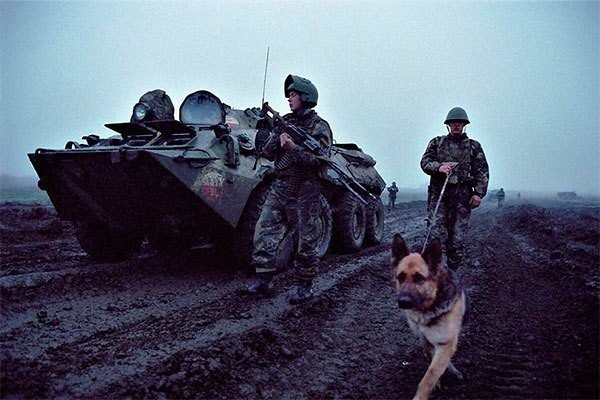In a previous article we looked at lineynokreyserskoe creativity Germany, US and Japan. And what about England?
Need to say, that the British sailors got into a very difficult situation after the First World War. One side, England, as of 1918-1919 gg., possessed the most powerful battle fleet, which the, generally, approaching multiderzhavnomu standard. On November 1918 g. It was composed KVMF 33 link, Considering subsequently transferred to Chile "Canada", and 9 Battlecruiser, except for those "large light cruiser" type "Koreydzhes". Total - 42 ship (or 41 without the "Canada"), and the rest of the world has 48 battleships and a battlecruiser (15 - US, 9 - Japan, 7 - France, Italy and Russia - on 5, except for the latter as "Emperor Alexander III», subsequently gone in Bizerte, Spain - 3, Brazil and Argentina - 2 and Turkey - 1 battle cruiser). But on the other side, basis linear British fleet was still pre-war buildings and is rapidly becoming obsolete, while the US and Japan fleets replenished latest battleships and both of these countries have initiated major shipbuilding programs. In the US in 1916 g was adopted an ambitious program to create 10 battleships and 6 Battlecruiser, War delayed these plans, but in 1918 g Congress confirmed its renewed, and starting from the next, 1919 city, it was financed in full. Japanese (even if not immediately) We took his famous program of "8 + 8". Both these powers immediately began laying the newest battleships, Armed 406-410 mm guns.
As a result, 1919 g British faced the, that their mighty fleet is aging rapidly. Of 9 Battlecruiser 4 represented ships type "Invincible" and "Indefatigebl", that, in fact, outdated even before the First World War, and the remaining five (two types of "Lion", 'Tiger', "Ripals" and "Rinaun") because of the extremely weak protection had very limited military utility. Of 32 British battleships ("Canada" they honestly gave Chile) 10 They were outdated, lost its military value ships, armed with a twelve-inch guns, 11, although it had an impressive 343-mm guns, but they were designed before World War I., and only the last dozen "381 mm" battleships (5 such as "Queen Elizabeth," and the same type of "Royal Soverin") They could be considered quite modern. At the same time, those same US 1919 Mr. disposal 9 battleships with 356 mm cannons (true, Two of the earliest type of ship "Texas" had as a power plant steam engines) and built 3 battleship with 406-mm guns on the new program, preparing to lay yet 7 battleships and 6 Battlecruiser. The English, in response to these super-there was only the battle cruiser "Hood" in the completion and no major ship construction plans.
Generally, the British gradually arose understanding, that if you do not take something, and urgently, then as his last performance of the US shipbuilding program of the Royal Navy could be in the shadow of the US. but then, to "foreign enemies", he adds "internal enemy" - the country, exhausted by nightmares of the First World War, not eager to enter into another, extremely costly arms race. Moreover - in the Admiralty began confusion and vacillation, because a number of the sailors hastened to declare linear force obsolete and dying, while the future belongs to submarines and aircraft.
in total, supporters of the resumption of construction of battleships had to endure two desperate battle, and they won the first - it was concluded by the results of a comprehensive study of a specially created post-war development of the Commission, battleships that "not lost another of its former value". However, the battle was lost for the budget - according to the August 1919 g "10 year rule" England armed forces budgets had to be determined not from their stated needs, and on the basis of the sums, that they will be able to find the Treasury. of course, Treasury then washed its hands ... reverse this trend was later, when 1921-1922 Admiralty fiscal year still managed to "knock out" of financiers funds for the resumption of construction of linear forces - bookmark the latest four battle cruisers.
Need to say, that the projects of the postwar ships, designed to fill the linear force KVMF, British reacted so severely, how it was at all possible. Of course, after approval of the final draft of "Hood" designers and admirals continued to entertain different options battlecruiser, done, in fact, in the same housing. But it was clear, that even the final scheme to protect "Hood" by and large is outdated and not suitable for modern ships. And that's why, when it's time to have a real future to determine the performance characteristics of battleships and battle cruisers, the British did in the best traditions of naval science and try to determine ... no, not tactical and technical characteristics of the Japanese ships and the US, which were built or designed at that time. The British did not seek to create ships, able to withstand battleships or battlecruisers, who built today, they wanted to create ships, who will be able to fight as a modern, and promising ships of this class.
After spending various calculations with the "participation" of the most powerful British guns (381-mm and 457-mm caliber), British concluded, advanced battleships that foreign powers for a more or less reasonable protection against such powerful shells in the end be forced to increase the thickness to bronepoyasa 380 mm, and the armored deck - up 178 mm. As we can see, look appropriate directories, nor the Americans, nor the Japanese at that time still not plotting anything. Battleships "Kaga" type had 305 mm and the total thickness of the board decks (instead of armor deck) to 160 mm thick in most places. Battleships "South Dakota" had 343 mm board thickness and armored deck to 89 mm, excluding structural steel decks. Nevertheless, British found, that the logic of battleships, sooner or later will result in the thickness of the deck and side armor to the thickness of the above.
In order to be able to overcome such serious protection, British needed heavy duty gun, and bids were made on the 457-mm gun. In this case, the British prefer their usual placement of such guns in four twin towers, but realized at the same time, that of the unloved three-gun tower installation can give great weight and size advantages, and that's why, probably, for the first time in the history of KVMF began designing three-gun systems at the same time two-gun. However, the British were willing to consider and 420-mm guns, and a new 381-mm long-barreled (pyatidesyatikalibernye) artillery system: however, these tools do not exist in nature, but favorites still remain 457 mm. As part of the anti-mine caliber it was decided to go back to using 152-mm artillery - now it was supposed to be placed in the towers with a high level of mechanization of loading operations, and it is the main advantage of offsetting the lighter 120-140-mm artillery systems - the ability for a long time to maintain a high rate of. Displacement of future battleships and battle cruisers was limited to dimensions of existing docks, as well as the Suez and Panama Canals, It was but there are different options. Underwater defense had to withstand torpedo hit with content explosives in 340 kg. The speed of battleships was first named 25 with., but then decreased to 23 with, but on the TOR for the battle cruisers Americans still had their "pernicious" influence - under the impression 33.5-node "Lexington" speed Britons want to set the bar in the first 33,5 with., but then changed temper justice with mercy, allowing to reduce the speed 30 with. Cruising range was to be 7 000 miles on 16 sites.
The first projects of the new type of battleship (King и L.III, digits indicate the presence of four twin or three three-gun turrets), presented in June 1920 city, boggle the imagination.
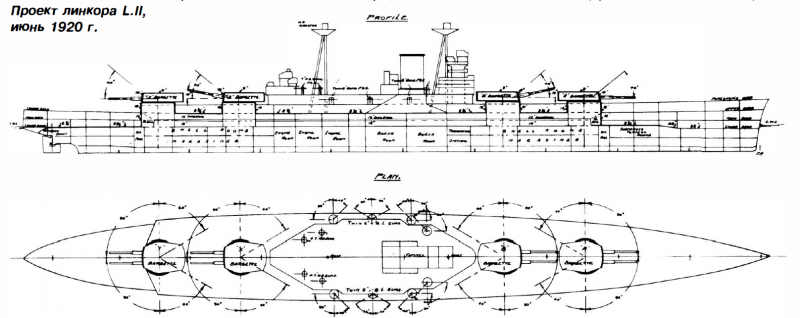
Normal displacement was L.II 50 750 t., head size is 8 * 457 mm guns, while the tower located linearly (rather than linearly elevated!), Mine - 16 * 152 mm guns in two-gun turrets. One side, Artillery linear arrangement looked completely archaic, not allowing the fire in the bow and stern guns two towers, but the British have calculated, that even at an angle of elevation in 12 deg second and third towers could fire on top of the first and fourth without damaging the past.
However, the real highlight of the project was the scheme of its reservation.
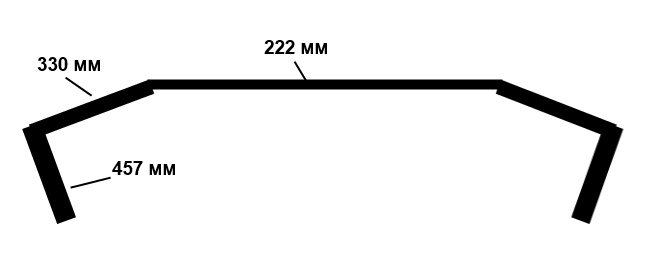
In this project, the British used the previously used American principle of "all or nothing". Armor belt over 150 m in length and exceptionally powerful eighteen inches in thickness (457-mm) I had a small height, just only 2,4 m, while he was at a large angle to the surface of the sea (25 city.). The horizontal part of the armored deck was also unprecedented, powerful - 222 mm. But this portion bronepaluby located considerably above the upper edges 457 mm bronepoyasa, that was quite unusual: 330 mm bevels bronepalubu not combined with lower, and the upper edge of the armor belt!
A certain logic in this (At first glance - totally crazy) arrangement had. Without any doubt, 457 mm vertical portion, and even at an angle 25 deg was able to withstand shocks 457 mm projectiles, presumably, what 222 mm armor (at least - in the medium range combat) could also reflect its. As for 330 mm bevels, here, probably, the angle of inclination has been chosen very carefully, so as, to small and medium-range missiles, having a sloping path, just ricocheted from them. Long-ranged, when the path became more hinged, bevel as if "we substitute" under the shell, but due to its large thickness, probably, It was still quite equivalent 222 mm horizontal protection. In this case, such a "cherepahoobraznoy" in the section where the protection is provided by a greater volume of the protected space, compared with the classical scheme of armor deck with bevels.
Why are we in the article, devoted the last British battlecruisers, so much attention paid to the project of the battleship? For one reason: to illustrate the, how in post-war projects "capital" ships of the British were ready to ignore all sorts of traditions and, The vision of many things, for the sake of the combat effectiveness of future battleships and battle cruisers. And that's what they eventually got.
Displacement
Alas, the size of the Suez Canal, coupled with the existing docks in England still seriously limit the size of future warships - their normal displacement should not exceed 48 500 t, and the dimensions of all the needs of admirals could not enter. As a result, the sailors and designers had to balance the armament, armor thickness, capacity of the power plant in order, to create in these dimensions balanced battleships and battle cruisers. The project battlecruiser «G-3 'normal displacement was 48 400 t (under normal fuel reserve 1 200 t).
Artillery
As the study of the various options battlecruiser shipbuilders came to the sad conclusion, that even a three-gun artillery is still too heavy, and 9 * 457-mm guns can not be placed on the ship, unless you sacrifice other parameters too much. As a result, it was decided at first limited to six 457-mm guns in two towers, but sailors on such innovation looked askance - six trunks very difficult sighting, and as a result it was decided to go for the first reduction in the caliber up to 420 mm, and then to 406 mm. Interesting, that "just in case" it was stated, that the three-gun turret 406 mm by weight of close to 457 mm two-gun, so if the decision will be taken back, the placement of 6 * 457-mm guns in three two-gun turrets will not require as a major redesign of the ship.
In general, a return to 406-mm guns looked quite reasonable and prudent step, but we should not forget, that if not for the Washington Naval Conference, Japan would be embarked (after two battleships type "Kaga") the construction of battleships (and, probably, Battlecruiser) 457 mm cannons. In this way, His Majesty's fleet part battlecruisers stopped "travel first class". But English is hardly worth the sorrow of it, in fact, It occurred to a certain "change of structure" - as in the time of WWI England neglected the protection of their battle cruisers in favor of the big guns and speed, Germany was limited to smaller size with better protection, and this approach is fully justified itself. Now, with the construction of «G-3" is already England would have been in the position of Germany, and Japan - England.
However, the situation is seriously complicated by the fact, what was once the world's best engineers UK, Alas, We failed to create an effective 406 mm artillery systems and three-gun settings for her. The thing is, what, although the battle cruisers project «G-3" never materialized in metal, but developed for their 406-mm / 45 guns took place in the towers battleship "Nelson" and "native", why we are good enough to present, What should have been to arm the last British battle cruisers.
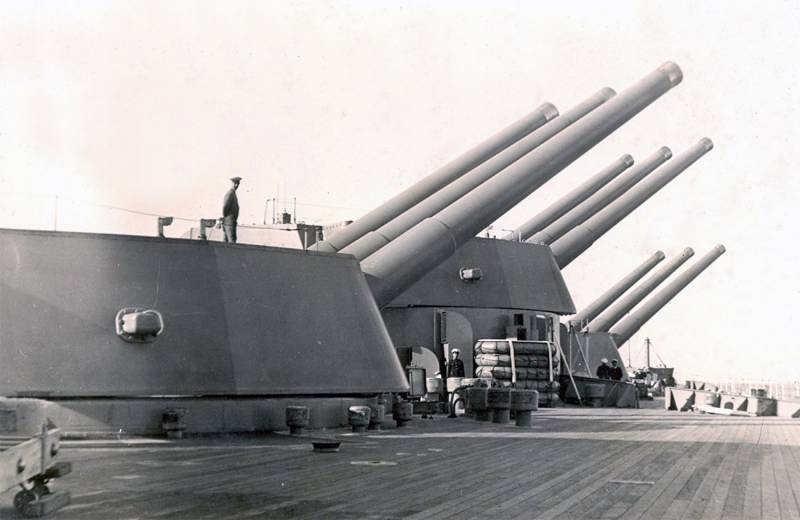
Tower installing LINK “Nelson”
so here, for years in, prior to World War I., British adhere to the concept of "hard shell - low initial velocity" and created a very impressive 343-381-mm guns. But when creating the British continued to use the increasingly outdated concept: wire barrel structure, which it had a sufficient number of deficiencies, somehow, eg, great weight, but one of them was critical - long-barreled guns, having the structure, They were not good. That is why the British never received the 305-mm / 50 gun, which, although it was adopted by the, but still not satisfied with the British on the accuracy of fire and a number of other parameters. As a result, the British were forced to return to the guns with a barrel length of less than 45 calibres, and to increase the power of these guns so, so that they are competitive with the newest German 305 mm / 50 implements, increased the size to 343 mm ... just that there sverhdrednouty.
Thus the concept of "low initial velocity - hard shell" as well as possible corresponds to the "wire" design trunks, because for such a long barrel gun system is not the, do not need to, but without it is possible to do. However, as a result of the First World War, the British concluded, that wrong, and that the concept of "light shell - high initial velocity" more promising.
In support of his thesis that "British scientists" led like a reasonable thesis, that in certain circumstances (eg, When injected into the armored decks of ships at long range) shorter "light" shells have an advantage in front of heavy broneprobitii (and, respectively, long). All this theory was so, but alas!, in practice, these advantages were insignificant. Nevertheless, itself was not the adoption of such a concept by some evil - the same Germans have created a very formidable 380-mm gun to their battleships of the "Bismarck". But this, yet again, occurred to a certain extent because, that the German artillery system had a long barrel (longer than he, the longer the exposure time on the shell expanding propellant gases, and this promotes muzzle velocity - up to certain limits, of course. The trunk, kilometer long, shell simply stuck).
so here, British mistake was that, what, adopting the concept of "lightweight shell - high initial velocity", they have maintained an archaic wire barrel design, limiting its length 45 calibres. As a result, the resulting artillery system had a very low survivability. To somehow solve the issue, the British had to make a significant reduction in the mass of the propellant charge, from what, of course, greatly reduced initial rate. The result has turned out disappointing - rather than, to shoot 929 kg projectile with a muzzle velocity 828 m / sec., British 406 mm / 50 provide such a projectile only 785 m / sec. As a result,, instead destructional "the right hand of the gods," the British sailors were very mediocre and, perhaps, worst-in-class pieces of artillery - as we have said before, US 406-mm cannon, installed on the battleships of the "Maryland", fired 1 016 kg projectile with a muzzle velocity 768 m / sec., Japanese a 410 mm cannon fired projectile weighing exactly ton initial velocity 790 m / sec. At the same time the US had a gun barrel life 320 shots, and the British - only 200.
Disadvantages of artillery systems were supplemented from the hands of an archaic and flawed construction of towers. Go to the electrical control and the British did not dare, saving hydraulics, true, at least it used as the working fluid, instead of water, which allowed the move to thin-walled steel pipes instead of copper. But the rejection of the loading mechanism at various angles (gun were charged at a fixed elevation angle), design error, due to the offset axes which occurred when turning towers, from what destroyed her shoulder straps and other, and the other led to the, that the crew "Nelson" and "Rodney" their main gauge delivered, perhaps, more trouble, than all the fleets of the Axis together.
However, all of the above can not be attributed to the shortcomings of the project battlecruiser «G-3". We can only repeat, that weapons of 9 * 406-mm artillery systems for this ship looked reasonably and sufficiently.
Mine represented by eight two-gun caliber 152mm towers, anti-aircraft armament was very advanced - six 120-mm artillery shells and four 40-mm desyatistvolnyh "pom-Poma". «G-3 'intended to equip two 622-mm underwater torpedo.
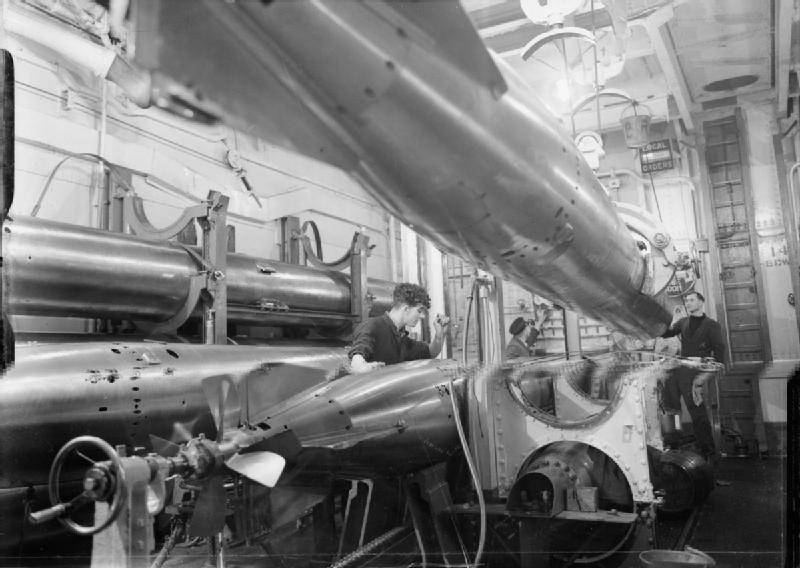
622-mm torpedo battleship “Rodney”
Weight was torpedoes 2 850 kg, they carried 337 kg explosives at a distance 13 700 m (ie almost 75 cbl) with speed 35 knots, or on 18 300 m (nearly 99 cbl) with speed 30 knots.
booking
To describe the system of body armor postwar British battleships and battle cruisers - a pleasure, because it was very simple and understandable. It's a complex and multi-level book ships time the PMA has replaced the US "all or nothing". protection armor base comprises a vertical belt length 159,1 m (the total length of the ship 259,25 mm at the waterline) and height 4,34 m - in the normal displacement, he fell on 1,37 m lower and stood at 2,97 m above the waterline. In this case, the slope of the armor belt had to 18 degrees, And yet - it was an internal, that is not in contact with the protected sea aboard, and was deepened into the body so, that its upper edge is defended on 1,2 m from the bead. In areas of the cellars of the main fire towers (for 78,9 m) the thickness of the armor belt has a maximum of 356 mm, the rest - 305 mm. In general, times are fully protected areas and the main towers of mine caliber, engine and boiler compartment of the ship. On its upper edge bevels relied only armored deck: however, the angle of the bevel was so small (Total 2,5 degrees!), that it was the time to talk about a single horizontal deck, but formally they still were. deck Thickness, how and bronepoyasa, had differentiated: cellars of the main caliber guns (i.e, apparently, over 78,9 site meter 356 mm side armor) she had 203 mm, Thinning aft sequentially to 172, 152, 141 and 102 mm (last, four inch thickness of the aft deck had boiler and engine rooms), When the area covered towers of mine caliber 178 mm bronepaluba. Citadel thickness became isolated abeam 305 mm anterior and 254 m in feed, but where there are two more additional 127 mm bulkhead, so that the overall protection was obtained is not so bad.
However, something that was protected and outside the citadel - so, underwater torpedo tubes (but where do without them), located in front of the citadel, were protected from 152mm bronepoyasa, traverse and armored deck of the same thickness. Steering apparatus defended 127 mm deck and 114 mm traverse. Likely, it was all, although some sources still indicate, that in addition to the above, is the citadel were still lower decks (probably, extends below the waterline) in the bow and stern, their thickness was 152 mm 127 mm, respectively,.
Artillery had a very strong defense. Forehead, side plates and roof towers defended, respectively, 432 mm, 330 mm 203 mm armor. Dogs had a thickness 356 mm, true, closer to the centreline, where barbet Overlap, or superstructure, it was reduced to the thickness 280-305 mm. But on the conning tower, can say, saved - 356 mm armor plating protected it only in the frontal projection, on the sides and back she had only 254 and 102 mm respectively armor.
Protivotorpednaya protection (which included bronepereborku 44 mm thickness) calculated to counter charges, equivalent 340 kg trinitrotoluola. Its depth is reached 4,26 m, as the "working fluid" is not used metal tubes (as in "Hud"), a water (Total - 2 630 tonnes!), while in times of peace it was supposed to keep the compartments PTZ drained. Interesting, that for rapid roll straightening system is provided for blowing separate chambers PTZ compressed air.
Power plant
anticipated, that the ship's engines will develop 160 000 hp, at the same time it will be the speed of ... alas, it is not clear, how much, because the sources are usually indicate the spread 31-32 with. However, even the lower bound is quite good, and, certainly, It gave the British battle cruiser many tactical possibilities of high-speed craft. However, Admiral, recalling the "Lexington", We were not satisfied with such speed and wanting more: though, reluctantly, agreed to, because a further increase in speed required significant reduction of other martial qualities, go on that nobody wanted. It is not clear, which would have a range of «G-3", whether it is built, but taking into account the quite impressive maximum stock of fuel in 5 000 t, it is unlikely it would be small, and it could make originally desired 7 000 miles on 16 knots or so. "Hood" at maximum fuel reserve about 4 000 so I was able to overcome 7 500 miles on 14 sites.
arrangement
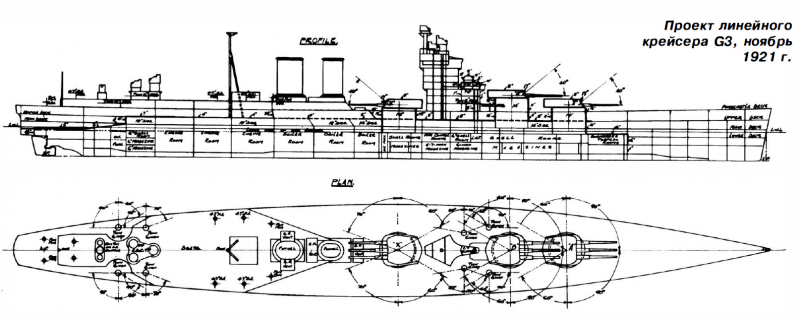
Need to say, the first look at the arrangement of line cruisers «G-3" immediately brings to mind the old saying, quite: "The camel - a horse, Made in England ". What for, well, why it took the British to abandon the normal and absolutely common placement of towers "two in the nose, one in the stern "in favor of ...?! but, surprisingly, the British had very serious reasons for, to "shove" the third tower in the middle of the housing.
Need to say, that the first iteration of the design of battleships and battle cruisers of the British carried out in quite the traditional manner.
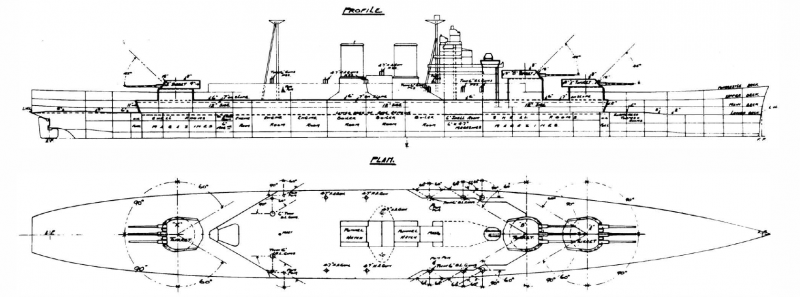
Project “K-3”, October 1920 g
But the thing is ..., that at that time all the British "capital" ships, for "Hud" inclusive, battery compartment located on the main caliber ammunition. This was due to the fact, that the hold of the ship is relatively compact, shells and occupy far less volume, than gunpowder, which should throw them out of gun barrels. And because the charge storage is always placed over the slug offices.
But this is now the British have seen a lack of, because that powder "warehouses" represent the greatest danger for the vehicles - fires followed by detonation in Jutland battle, According to the authoritative commissions, It caused the penetration of fire powder, and not in the cellar snarjadnye. Generally, on tests shells have proven somewhat more resistant to the shock wave and the flame. Therefore, the British concluded, that the location of the charging branches near the bottom, under the storage shells, will provide the latest battleships and cruisers much better survivability, than previously possible. but alas, swap storage projectiles and charges in the traditional arrangement does not work. That is to make sure it would be possible, but it ceased to be a rational arrangement, needed to extend the citadel, which led to an increase in displacement, etc., and it was not until, until someone suggested exactly the scheme, we see in the final draft of the «G-3". Location three 406-mm towers in close proximity to each other has helped to place the powder magazines for ammunition, without sacrificing the other characteristics of the ship. That this was the reason, according to which the British and taken to their newest battleships and battle cruisers as, at first sight, strange location of the main fire artillery.
However, It should be noted, that the most extravagant layout had still not battlecruisers project «G-3", frigates, N-3, Admiralty who was going to lay a year after the battle cruisers
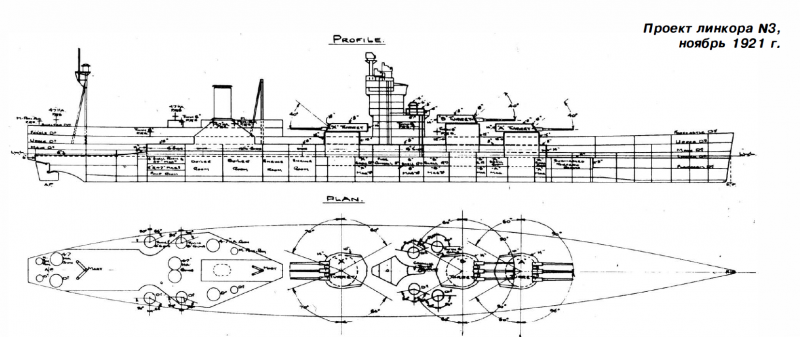
As is known, on warships traditionally considered placement of boiler rooms closer to the stem, and machine - to sternpost, ie steam engines (or turbine) They arranged for boilers, near the stern. The same was the case and battle cruisers «G-3". However, on the battleship «N-3" the British have managed to swap them - that is, after the first third of the tower were machine, and only then - boiler rooms!
Comparison with "classmates"
Having studied the projects of the postwar battle cruisers (last war - Germany), we come to a conclusion about the unique superiority of the British «G-3" over the German, American and Japanese ships of the same class. His nine 406-mm artillery shells, at least on paper, almost not inferior to the most heavily armed "AMAG", wherein «G-3" superior "Japanese" in the rate per node, and had a much more powerful armor. American "Lexington" at a meeting with «G-3" could count unless on "retreat to prepared positions", - or rather, to flee, because speed was the only parameter, for which it has battlecruiser had superiority over the «G-3" (33,5 with anti 31-32). But in practice, it is not likely to be able to, and in the battle of the "American" was not simple chance, hope could be except for a miracle.
The most articulate chances of success against the «G-3" had to except that the German battlecruiser, but - nine 406-mm English ship still seem preferable 6 * 420 mm German, a 350 mm belt last, though superior length 356 mm portion «G-3 ', but it was significantly lower, and the second was only bronepoyas 250 mm. At the same time we must not forget that, that the Germans used vertically disposed plate, while the British were planning to put them at an angle, reduced thickness and British protection was 374 and 320 mm 356 mm 305 mm sections respectively. But the most important thing, that «G-3 'possessed incomparably more powerful horizontal protection. In the previous article we mentioned, that the thickness of the main German armored deck of the ship was 30-60 mm, but this issue requires further clarification, and perhaps yet it was all over 50-60 mm. But, for obvious reasons, even if it did, then such a thickness does not go to any comparison with 102-203 mm ʙronepaluʙoj 'G-3'. Of course, German cruiser had more armor (or simply a thick mild steel) deck in 20 mm, Diversity but such armor has a lower resistance, than single broneliste same thickness, and the advantage of «G-3" is still overwhelming. At all, generally, namely armor protection «G-3" is a real "highlight" of the project, whereby it significantly superior to similar projects in other countries.
Nevertheless, we can see and the, that the project is the last British battlecruiser also had significant drawbacks. In particular this applies, oddly enough ... the reservation system, we have just named the most that neither is impressive. But in fairness it should be pointed, that more or less acceptable protection against 406-mm projectiles looked only citadel portion, who had 356 mm (374 mm shown) vertical armor and 203 mm armor deck. That would be enough, but the length of the portion of the citadel absolutely small - only 78,9 m or 30,4% the total length of the waterline. The rest of the citadel, which had 320 mm reduced vertical armor, and 102-152 mm horizontal, is no longer sufficient protection against projectiles this caliber. Also barbettes towers of the main fire, even his 356 mm pieces were quite vulnerable, although punch they would not be so easy: they have a circular section, so get in the barbet angle, close to 90 degrees, It was very difficult.
Vertical armor belt «G-3" was "drowned" in the board, which saves on weight bronepaluby, So how does it already, but at the same time reduces the amount of space booked: while enemy projectiles can cause serious (while not threatening the loss of the ship) injury, not even break bronepoyasa. Tip of the ship were completely protected, that was more or less acceptable in the battle battleships, but it is a big disadvantage in most other combat situations - even relatively minor damage from the high-explosive bombs and shells could cause extensive flooding, strong trim by the bow or the stern, and as a consequence, a significant drop in the combat capability of the battlecruiser.
Yet on the whole it should be stated, that the project «G-3" English as close as possible, much closer than other countries approached the concept of high-speed battleship during World War II. And if they had something not happened, it is not because, that the English admiral and designers something did not understand, or failed to take into account, but only because, that given the normal displacement (48 500 t) on technologies early 20-ies was absolutely impossible to design and build a 30-node battleship, Ball 406 mm gun and well protected from the shells of the same caliber. The British knew exactly, what they wanted, inaccessibility understand their desires and had to go to conscious compromises. And we have good reason can say, What do you get if not ideal as a result of these trade-offs, but extremely good and well balanced draft battlecruiser «G-3".








